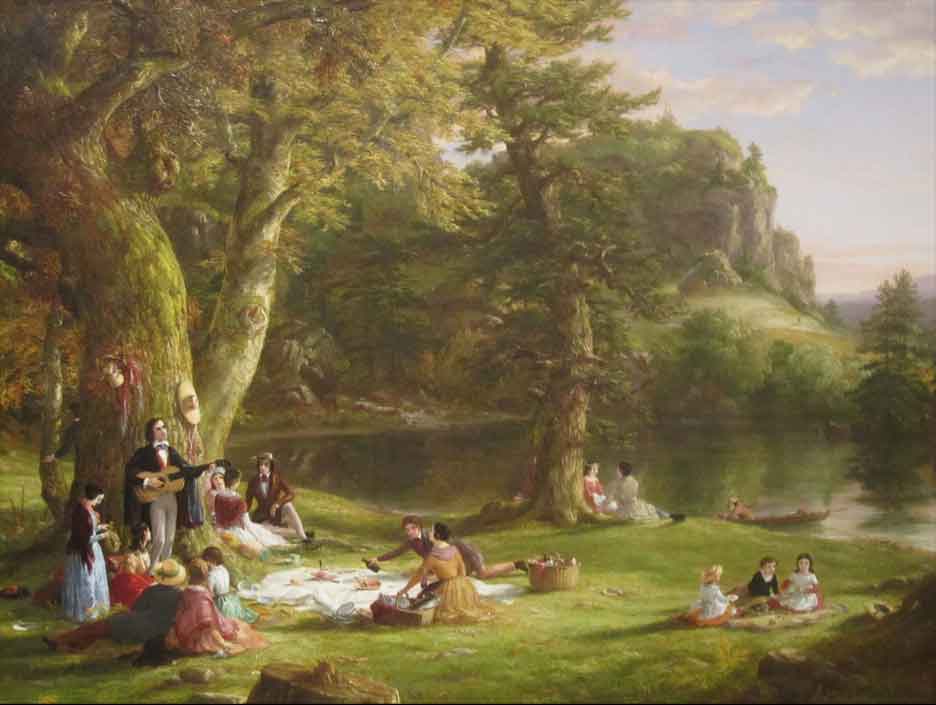Fine Arts in Antebellum America

Picnic in the Catskills by Thomas Cole
The development of American literature was far more dramatic than that of American fine arts in the antebellum period. Painting was most prevalent of the fine arts in the United States. While the old masters of American painting, such as Benjamin West and Gilbert Stuart, were gone; a new generation had emerged. Among the new painters were Rembrandt Peale, Thomas Sully, John Trumbull and Samuel F. B. Morse, who later invented the telegraph. American students of painting still generally traveled to Europe to study, although a home-grown "school" of painting, the Hudson River School, developed under Thomas Doughty, Asher Durand and Thomas Cole. The term "Hudson River School" was used retrospectively to describe the work of several generations of American landscape painters active between about 1825 and 1870. These painters worked in different locations, but shared common inspiration: the beautiful nature views of the Hudson River Valley, in the Catskill region to the north of New York City
.
In architecture, Greek themes dominating previous Georgian colonial styles. In sculpture, Hiram Powers was the most distinguished American representative. American monuments, generally patriotic, finally caught up with the Revolutionary War; as construction began on the Bunker Hill (1825) and Washington Monuments (1836). The Bunker Hill Monument was built in about 18 years, while the Washington Monument took almost 50 years to complete.
 >
>